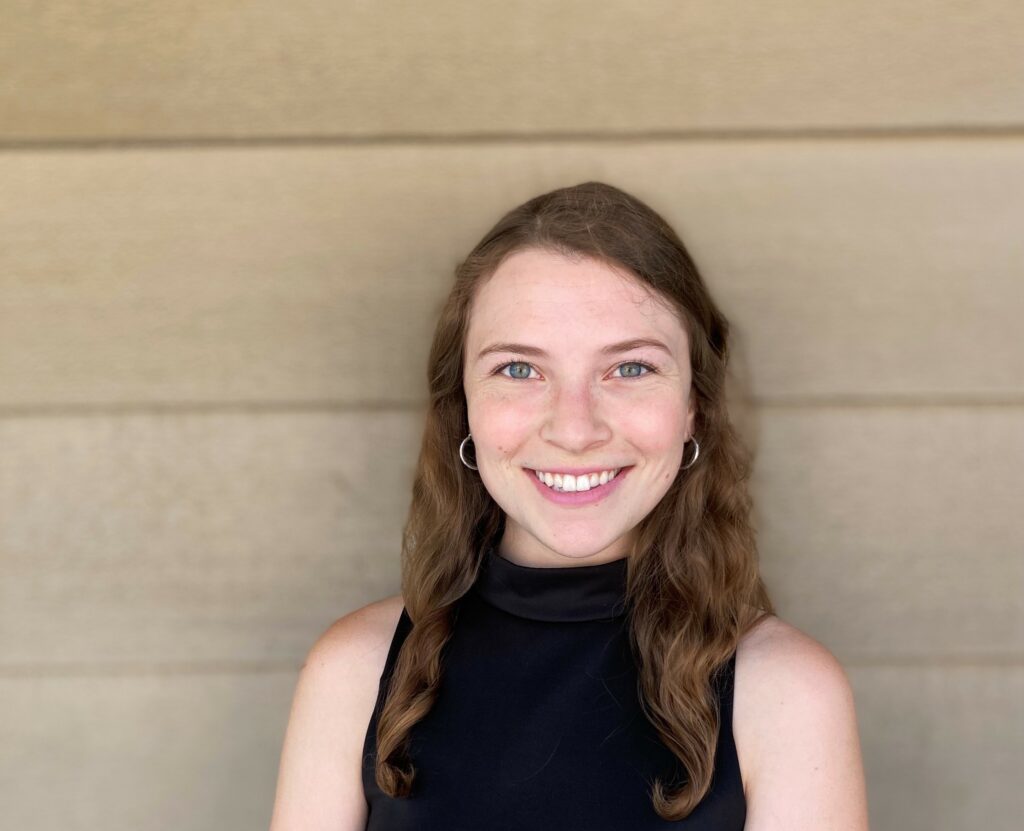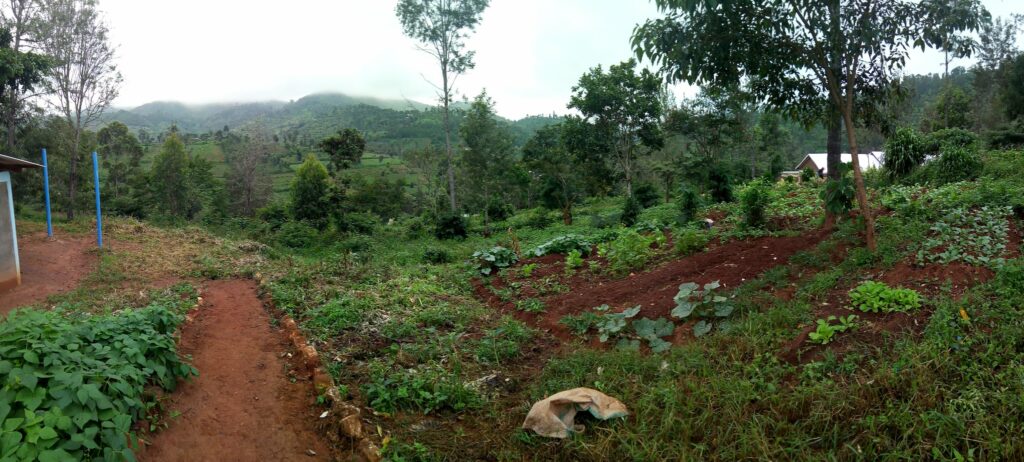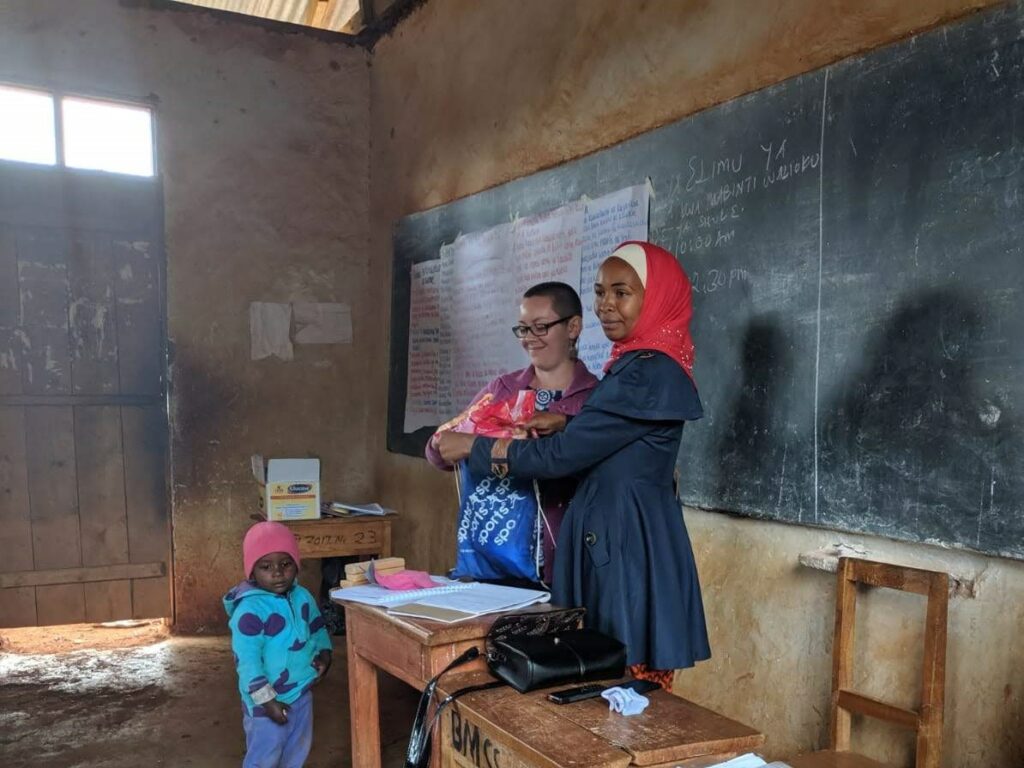
by Laura Vary, Master’s student, Marine Resource Management
Take a moment to consider the factors that allow you to read this article as an adult today. You (hopefully) have sufficient food and water to power your cells, which work tirelessly to flood your brain with enough glucose to retain an understanding of sentences. You have enough time and attention to focus on these words. In one way or another, you obtained a device with which to view this article, and viable internet connection to load materials. To be in the position of reading this article, many moments had to happen in precisely the right way.
Now, imagine you’re a tiny larval fish, smaller than ball bearing, in the middle of an ocean thousands of miles wide. The fate of your population rests on your poorly developed spine and you are experiencing your environment for the very first time. You lack developed eyes but can recognize light, you can swim (barely), but have no chance of fighting against the strong currents that push you across space. Yet, somehow, you must find food and a comfortable area where you can grow. Somewhere warm enough, as your growth will stop if the water is too cold. Somewhere calm enough, where you can have a chance of not only finding prey but capturing it.
The number of factors that must go right in order for these nearly microscopic creatures to mature into adults is almost incomprehensible. They do, though, and mature adults support a sector of the United States’ economy worth nearly $5.5 billion1.
In the United States, fisheries are extremely important to coastal communities’ cultures and our national economy. If you’ve eaten U.S. seafood recently, chances are that it came from Alaskan waters: 60% of all U.S. fish landings occur in Alaska, primarily in the Bering Sea1. Over $500 million is contributed to the U.S. economy from Alaska alone, and 1.2 million jobs stem from Alaska fisheries2.

Alaska fisheries are booming, but the environment is changing rapidly. The Bering Sea is experiencing a swift onset of climate change with notable decreases to the sea ice that is vital for a functioning ecosystem3. It is very possible that those little larvae we imagined earlier will have a harder time finding adequate areas to grow up, areas with proper food and comfortable thermal conditions. If larvae are unable to find these preferred areas, the population that supports valuable fisheries is likely to drop in numbers4. Poor larval survival has been observed to cause fishery closures and population declines globally, which cost coastal communities and the U.S. economy millions of dollars5. To improve the health of larvae and secure the health of our fisheries upon which the national economy depends, we must continue supporting fishery sustainability into the future.
Media coverage of the oceans frequently adopts a “doom and gloom” lens, with typical news articles focusing on rapid glacial melt, population crashes, hurricanes, plastic pollution, and a myriad of other threats facing our oceans and coastal communities6,7. While these articles are addressing very real problems, successes in the marine world are often glossed over. Fishery sustainability, for example, is an area in which the U.S. and specifically Alaska have performed quite well.
Historically, fisheries management has been narrow in scope, establishing policies for the uses and protection of single species or even age groups within a species. Fisheries managers tended to imagine the ecosystem as a set of isolated ecological islands rather than dynamic and interwoven facets of the same community8. Alaska, alternatively, has maintained sustainable fisheries through a different approach: ecosystem-based management, or ecosystem-based fisheries management (EBM/EBFM). EBFM acknowledges the interconnected nature of ecosystems and elucidates connections among ecosystem components to promote long-term sustainability of natural resources. EBFM is a management framework in which all components of a healthy ecosystem, including humans and the use of natural resources by humans, are considered8–10. Simply put, EBFM is a way of managing human interactions with natural resources that emphasizes connections within the ecosystem and society and is adaptive across time and space9. In places where it has been implemented, like in Alaska, long-term sustainability of fisheries has been observed which is a testament to the importance of holistic management11,12.
EBFM can be thought of as treating the source of an illness rather than its symptoms. A patient complaining of chronic nausea, for example, will likely have a better health outcome if a doctor considers their diet, environment, stress levels, and exercise routine rather than simply prescribing anti-nausea medications. In Alaska, fisheries have been managed following this holistic EBFM framework for decades11,12. Researchers and managers work tirelessly to understand the internal connections among organisms, the drivers of change, and the most important threats, much like a doctor trained in comprehensive medicine. Nationally, the U.S. has made strides in implementing EBM principles in fisheries management and scientists recommend the integration of EBM principles to other marine industries, like the development of renewable energy10,13. Now, perhaps you’re wondering why we should still be concerned about the fate of those larvae, and ultimately our fisheries, if EBFM is making such improvements nationwide. This question harkens back to a key concept of EBFM: it is adaptive and iterative in nature, requiring updates and modifications as the environment and human society change over time9. Further, status evaluations across vulnerable life stages of important fisheries (e.g., larvae) are required to improve EBFM implementation5.

Credit: NOAA Fisheries, Alaska Fisheries Science Center, 12/30/2021.
To better inform EBFM, it is extremely important to understand what may happen to fish larvae if the Bering Sea warms dramatically or experiences more storms, or demands on fisheries increase to support a growing human population. I spend a lot of my time thinking about larval fishes in the pursuit of a better understanding of the factors that drive survival and successful maturation into juvenile fishes and eventual adults. Specifically, I investigate how the reproductive behavior of larval fishes in the Bering Sea may change in the future, and how anticipated changes could impact the survival of larvae. Through my research, I found that walleye pollock exhibit flexibility in where they spawn. This suggests that in warm years, aggregations of walleye pollock spawning adults may occur in regions different from historic population tendencies (note: these results are unpublished and thus have not been peer-reviewed yet).
To promote adaptive management, many possible ecosystem states, relating to differing climate states, should be considered10. In the case of pollock, managers need to know that spawning aggregations may shift geographically in warm conditions for many reasons. Pollock eggs (roe) are harvested and so the lucrative roe fishery may need to move locations in the future. A movement of spawning adults could cause larvae to hatch in unfavorable areas, increasing larval mortality and leading to closures of the adult fisheries. Adult pollock could also move outside of U.S. fishing jurisdictions as the region warms, potentially warranting new international fishing agreements or modifications to established fishing areas14. My research therefore supports EBFM approaches by elucidating drivers of change which managers can then integrate within adaptive management strategies. At the end of the day, a failure to acknowledge different survival rates and environmental pressures across life stages in fisheries management could seriously impact the U.S. economy.
Any U.S. community member is connected to the marine environment through the impact that fisheries and marine industries have on our economy. This economic connection between societies and their ecosystems is a fundamental driver of EBM, and underscores why even individuals living in landlocked states hundreds of miles from a large water body rely on a functioning marine ecosystem. The need for EBM, though, extends beyond fisheries management. Currently, global powers are developing “blue economy” initiatives which seek to improve the financial gains nations can receive from marine and coastal activities15. The blue economy includes any industry that occurs in marine or coastal areas, including power generation, fishing, tourism, and shipping16. The EBM framework should be integrated at every level of blue economy initiatives to prevent follies we’ve experienced in the past (e.g., overfishing, uncontrollable oil spills, plastic pollution, etc.)15. The EBM framework can also promote the development of even more jobs, as collaboration and a diverse team structure are central components of the EBM approach15. Recently, the National Oceanic and Atmospheric Administration released a Blue Economy Strategic Plan that works to enhance emergent marine industries and protect their sustainability into the future16.
Yesterday, you may not have ever thought of larval fishes. After reading this article, I hope you understand the importance of their survival to the success of the U.S. economy. Millions of livelihoods and hundreds of coastal communities directly rely upon the commercial harvest of fisheries, but all U.S. citizens indirectly benefit from these marine ventures. At the heart of this industry are the tiny, frequently forgotten young fishes that must fight battles worthy of a Homeric epic: They avoid relatively monstrous predators and capture microscopic prey, all while being swept along by powerful currents. The sustainability of marine fisheries in the U.S. hinges on the implementation of EBFM in management and EBM in emergent blue economy ventures. More specifically, though, it hinges on the ability of scientists and managers to elucidate the drivers of mortality in the most vulnerable life stages of these organisms.
References
1. Cody, R. Fisheries of the United States, 2019. 167 (2021).
2. Fisheries, N. The Economic Importance of Seafood | NOAA Fisheries. NOAA https://www.fisheries.noaa.gov/feature-story/economic-importance-seafood (2020).
3. Stabeno, P. J. & Bell, S. W. Extreme Conditions in the Bering Sea (2017–2018): Record-Breaking Low Sea-Ice Extent. Geophysical Research Letters 46, 8952–8959 (2019).
4. Hjort, J. Fluctuations in the great fisheries of northern Europe, viewed in the light of biological research. (1914).
5. Laurel, B. J. et al. Regional warming exacerbates match/mismatch vulnerability for cod larvae in Alaska. Progress in Oceanography 193, 102555 (2021).
6. Oceans. The New York Times.
7. Oceans. HuffPost https://www.huffpost.com/impact/topic/oceans.
8. Lester, S. E. et al. Science in support of ecosystem-based management for the US West Coast and beyond. Biological Conservation 143, 576–587 (2010).
9. McLeod, K. & Leslie, H. Why Ecosystem-Based Management? in Ecosystem-Based Management for the Oceans 10 (Island Press, 2009).
10. Leslie, H. M. & McLeod, K. L. Confronting the challenges of implementing marine ecosystem-based management. Frontiers in Ecology and the Environment 5, 540–548 (2007).
11. Holsman, K. K. et al. Ecosystem-based fisheries management forestalls climate-driven collapse. Nature Communications 11, 4579 (2020).
12. Fisheries, N. Ecosystem-Based Fisheries Management Strengthens Resilience to Climate Change | NOAA Fisheries. NOAA https://www.fisheries.noaa.gov/feature-story/ecosystem-based-fisheries-management-strengthens-resilience-climate-change (2020).
13. Copping, A. E. et al. Enabling Renewable Energy While Protecting Wildlife: An Ecological Risk-Based Approach to Wind Energy Development Using Ecosystem-Based Management Values. Sustainability 12, 9352 (2020).
14. Baker, M. R. Contrast of warm and cold phases in the Bering Sea to understand spatial distributions of Arctic and sub-Arctic gadids. Polar Biol 44, 1083–1105 (2021).
15. Wenhai, L. et al. Successful Blue Economy Examples With an Emphasis on International Perspectives. Frontiers in Marine Science 6, (2019).
16. NOAA Finalizes Strategy to Enhance Growth of American Blue Economy. U.S. Department of Commerce https://www.commerce.gov/news/blog/2021/01/noaa-finalizes-strategy-enhance-growth-american-blue-economy (2021).

















